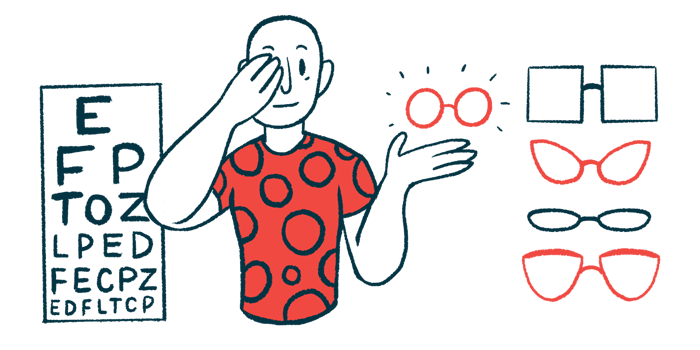Thinning in Retinal Layer Initial Sign of Damage in Late Infantile Batten

In children with late infantile Batten disease, degeneration in a specific part of the eye’s retina called the parafovea occurs before other parts of the retina are affected, a study reported.
The study, “Automated Retinal Layer Segmentation in CLN2-Associated Disease: Commercially Available Software Characterizing a Progressive Maculopathy,” was published in Translational Vision Science & Technology.
The retina is the area at the back of the eye that houses cells that sense light for vision. These cells are arrayed in a particular pattern with distinct segments, shaped sort of like a “bull’s-eye”: in the center is the fovea, the place where visual acuity is the highest. Surrounding the fovea is the parafovea (“para” means “alongside or near”), and outside of the parafovea is the perifovea (“peri” means “around or surrounding”).
Late infantile Batten disease, also called CLN2 disease, is characterized by the death of nerve cells. The cells in the retina are known to be particularly affected.
Researchers at Weill Cornell Medical College examined how the retina was being affected in people with CLN2 disease at different ages. The team used data from a natural history clinical trial (NCT01035424); in total, they analyzed 27 eyes from 14 children with Batten disease.
“In CLN2-associated disease, vision loss tends to occur late in the disease course after other symptoms have become manifest; however, retinal structural changes can be noted on optical coherence tomography (OCT) in patients as young as 2 years of age,” the researchers wrote.
Patients were on average 42 months old (about 3.5 years) at diagnosis, and an average of 57.2 months old (almost 5 years old) when their eyes were assessed using OCT, an imaging technique.
“This study includes patients ranging from 30 to more than 97 months of age [about 8 years] … demonstrating imaging findings across a wide spectrum of disease states,” the researchers wrote.
By analyzing the OCT measures, and comparing measures for these different ages, the researchers identified certain patterns in retinal changes. For instance, in comparing measurements from 39-month-old patients and those for 46-months-olds, significant differences were found in the thickness of the parafovea, specifically in the outer nuclear layer.
No such differences were seen for the fovea or perifovea at these time points. Significant differences in thickness of the perifovea appeared in comparisons of patients 60 to 66 months old and in those more than 67 months of age.
“Parafoveal ONL [outer nuclear layer] thinning seems to be one of the earliest objective findings in CLN2-associated retinal degeneration,” the researchers concluded.
They added that this difference in the parafoveal outer nuclear layer was apparent “before the critical period identified by more conventional measurements” based on OCT, such as the central subfield thickness (CST), which is basically the thickness of the fovea.
“Unlike segmented thickness measurements, the CST did not demonstrate a statistically significant difference in thickness between any age cohorts,” the researchers wrote.
Measuring the thickness of the parafoveal outer nuclear layer “may serve as a more sensitive biomarker for the onset of degeneration compared to other OCT measurements such as CST,” they added, noting it could be useful in clinical trials testing investigational therapies for Batten disease.






